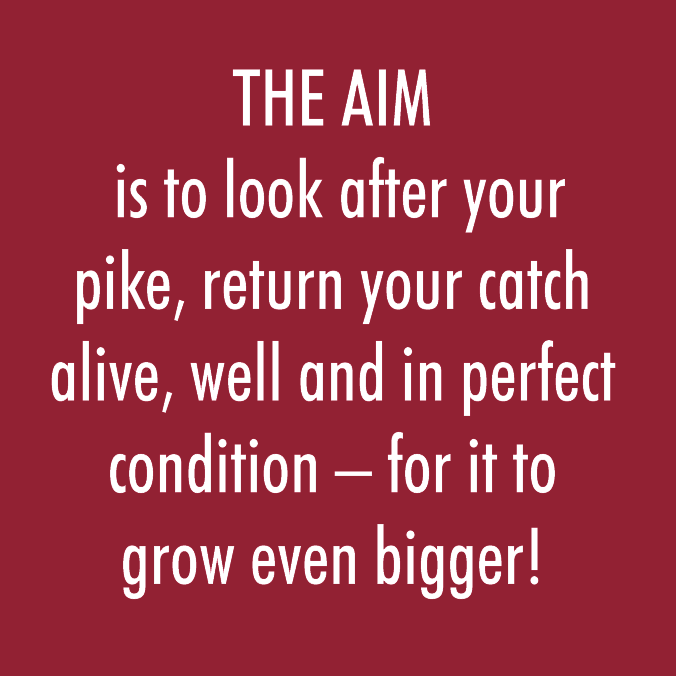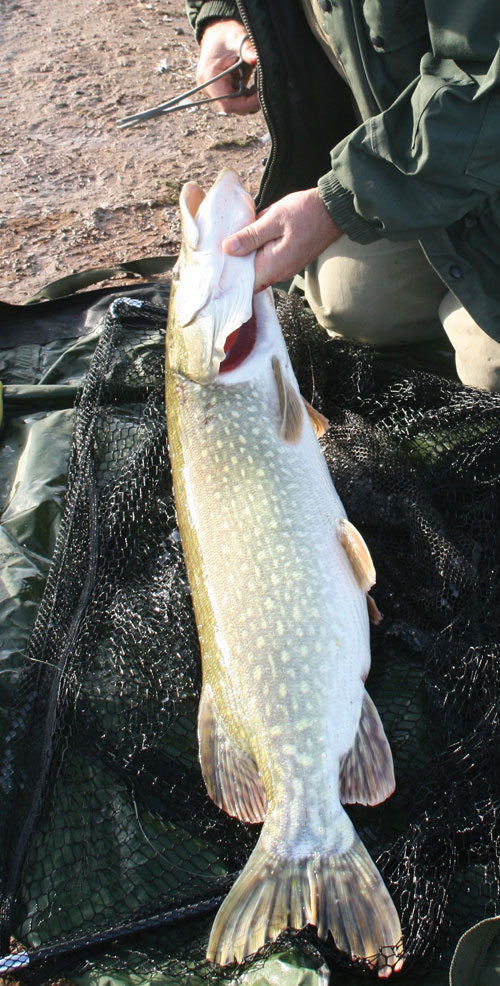Coping with gassed-up pike
By general consensus, a gassed-up pike is one that, instead of swimming off underwater when returned after capture, swims just under the surface and attempts to dive. Sometimes it fails to dive and then starts to wallow on the surface. This may be so bad that the pike rolls over onto its back. At this stage it is clear that the pike is in trouble. There appear to be two types of ‘gassing-up’; one in which the pike appears very obviously inflated, and a second where the pike is simply unable to maintain its equilibrium and remain upright.
‘Gassed-up’ pike are often associated with deep water venues, where pike are caught close to the bottom and raised quite quickly to the surface. Anglers have reported seeing pike coming up from deep water emitting bubbles from their mouths, which suggests that pike can release excess gas from their swim bladders if they need to, but perhaps under some circumstances they are unable to do this and become ‘gassed-up’.
‘Gassed-up’ pike caught from shallow waters are more likely to be the result of exhaustion and the build-up of lactic acid as a consequence of the energetic and/or prolonged fight. The problem with lactic acid is that lots of it can in fact be dangerous, affecting the chemical balance of the exercised fish. Some anglers have released pike only to see them swim out a few yards and roll on their side on the bottom. Clearly these pike have not been ‘gassed-up’, but over tired. For a pike which has been over-exercised by someone trying to land it using light gear, a period of recovery is required, when plenty of oxygen is essential.
Keeping the pike out of the water too long, and high marginal water temperatures with low oxygen levels can increase the problem. It seems likely that the two phenomena of lactic acid build up and excess gas could be connected. Dr Bruno Broughton suspects that the act of playing a pike, especially if the fight is hard, can cause a malfunction of the duct between the swim bladder and the foregut, although quite how this occurs is open to conjecture.
The key to avoid pike ‘gassing up’ in the first place seems to be to use tackle which will land pike quickly. A minimum 15lb line and rods with test curves between 2.5lb and 3.5lb will ensure that no pike should take longer than ten minutes to land. Don’t play your fish for longer than necessary. Don’t keep the fish out of the water for more than a couple of minutes otherwise you may have a fatality on your hands. Rest it in the landing net in-between unhooking and photography. Then get it back quickly. Six photos is more than enough for anyone!
If you should be so unlucky to have a pike in difficulty you need to find shallow, sheltered piece of water and stake the fish out using all your rod rests, or anything you can beg or borrow to form a ‘cradle’ to keep the pike upright, then simply leave it alone for as long as it takes the fish to recover. This might be minutes or hours, but the more you mess the pike about the worse things will get. If you can find an area of oxygenated current, such as an incoming stream, place the pike in this area facing into the flow.
Various ideas have been suggested regarding releasing excess gas from the swim bladder. Indeed the Americans have had some success using a syringe to remove gas from the swim bladders of walleye. Unfortunately, this is a skilled technique which we don’t recommend untrained anglers to attempt. Some anglers have reported some success in releasing gas by holding back the gullet wall with a landing net handle. Others recommend bending the fish to force gas out. However, all these techniques seem risky and uncertain – but in extreme cases they might be worth trying. A staked out fish, once it has metabolised its excess lactic acid should be able to rectify the balance of gas in its swim bladder, keep itself upright and swim strongly away.
A PDF file copy of this (Fact Sheet 4) is available here: Coping with gassed up pike
This sheet has been compiled from material which first appeared in the February 2002 edition of Pikelines by Neville Fickling, Geoff Parkinson and Bruno Broughton.


